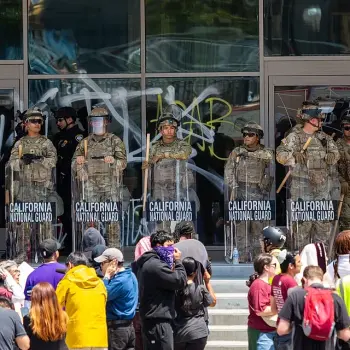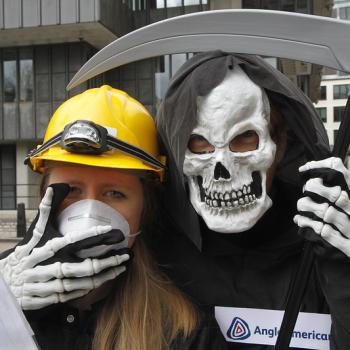I saw Zero Dark Thirty, the film about the hunt for Osama bin Laden. Earlier, the word was that it would be released just before the election, which had conservatives up in arms, fearing that a cinematic treatment of President Obama’s victory was Hollywood’s plot to get him re-elected. But there is nothing triumphalistic about this movie. Opponents of the war on terrorism will find lots of material in scenes of torture and brutality (as in killing terrorists in front of their children as they cry). And yet supporters of the war on terrorism will also find lots of material in the opening recording of phone calls from World Trade Center victims right before their deaths (talk about 911 calls), the continuing acts of terrorism throughout the movie, and in the heroism of both the troops and the CIA operatives who brought Osama bin Laden to justice. I think Zero Dark Thirty is what an objective treatment of a controversial issue by a work of art looks like.
Kathryn Bigelow, who also directed The Hurt Locker about explosive experts in the Iraq war, has made a first-rate thriller out of (mostly) actual facts. She tells the story of a CIA agent named “Maya,” based on an actual woman whose name is classified (see this for her career at the agency), who noticed that interrogated detainees often mentioned the name of a man who brought them letters from Osama bin Laden. She reasoned that if they could locate this man, he could lead them to the head of al Qaeda.
Easier said than done, of course. He used an assumed name, he was reported dead, and further terrorist attacks were killing the C.I.A. investigators. The tale of how the man was identified, traced, and followed, leading to that walled house in suburban Pakistan, is a fascinating saga of putting together fragmentary evidence involving interrogations, deductions, isolated facts, guesswork, tradecraft, and technology (in another contribution of cell phones with GPS devices).
Contrary to the political fears, this movie does not put Washington in a particularly positive light. The suits at Langley and the White House are depicted as overly hesitant to do anything, always demanding stronger evidence that the third man in the compound who could never be seen was, in fact, bin Laden. But the level of certainty they wanted was impossible. The decision to go in, based on what all of the experts said was a 60% chance that it was him (except for Maya, who insisted it was 100%), was a risk. And President Obama deserves credit for that, though the film never shows him or directly references his decision.
The CIA is denying that the information came from torture and that the “enhanced interrogation” was conducted as shown here. See this account from Jose Rodriguez, former head of the CIA Counterintelligence Center, for what the movie got wrong and what it got right.
At any rate, there is no doubt that war, terrorism, and counter-terrorism are rough, violent, and death-ridden. The movie is not for the faint of heart, but it is very good. Most people probably leave the theater with a sense of uneasiness but also grim satisfaction.











